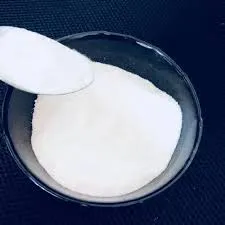
سبتمبر . 12, 2024 04:09 Back to list
HPMC Grades - Comprehensive Guide to Hydroxypropyl Methylcellulose Grades
Understanding HPMC Grades A Comprehensive Overview
Hydroxypropyl Methylcellulose (HPMC) is a versatile and widely used cellulose ether in various industries, including pharmaceuticals, food, cosmetics, and construction. Its unique properties, such as biocompatibility, non-toxicity, and excellent film-forming ability, make it a popular choice for a multitude of applications. However, HPMC is not a one-size-fits-all material; it comes in various grades, each tailored for specific uses and requirements. In this article, we will explore the different HPMC grades, their characteristics, and applications.
The Basics of HPMC
HPMC is derived from cellulose, a natural polymer obtained from plant cell walls. It is modified to introduce hydroxypropyl and methyl groups into its structure, which enhances its solubility and makes it suitable for a wider range of applications. The degree of substitution (DS) of these groups and the viscosity of the HPMC solution significantly influence its properties.
Key HPMC Grades
HPMC grades can generally be classified based on their viscosity, purity, and intended usage. Commonly, they are categorized as follows
1. Low Viscosity Grades These grades typically have a viscosity of less than 1000 mPa·s. They are often used in applications where a thin solution is needed, such as in the preparation of granules or in coatings.
2. Medium Viscosity Grades Ranging from 1000 to 5000 mPa·s, these grades find use in a variety of formulations. They provide the right balance of thickness and flow, making them ideal for applications in pharmaceuticals as binders and film-formers.
3. High Viscosity Grades With viscosities exceeding 5000 mPa·s, high viscosity HPMC grades are used in situations that require high thickness and stability. These are particularly favored in the construction industry for producing thick mortar and tile adhesives.
hpmc grades

4. Specialty Grades Some grades of HPMC have been designed for specific applications. For instance, HPMC can be modified further to improve hydration or to create a controlled release formulation in drug delivery systems.
Applications of HPMC Grades
The versatility of HPMC makes it suitable for an array of applications across several industries
- Pharmaceuticals HPMC is widely used in tablet and capsule formulations as a binder, coating agent, and controlled release agent. It facilitates smooth swallowing and improves the stability of the active ingredients.
- Food Industry HPMC acts as a thickening agent, emulsifier, and stabilizer in various food products. Due to its ability to retain moisture, it also helps prolong the shelf life of food items.
- Cosmetics In the cosmetic industry, HPMC is incorporated into creams, lotions, and gels as a thickening and stabilizing agent. Its non-toxic nature makes it a safe choice for personal care products.
- Construction HPMC is used in cement and mortar formulations to improve workability and water retention, which significantly enhances the bonding and flexibility of building materials.
Conclusion
Understanding HPMC grades is crucial for manufacturers and formulators in different sectors to select the appropriate type for their specific needs. With its numerous advantages and applications, HPMC continues to be a key ingredient in various formulations, contributing significantly to the efficiency and effectiveness of products in everyday use. Whether in a pharmaceutical tablet or a cosmetic cream, the right grade of HPMC can make all the difference in product performance.
-
Why HPMC is a Key Additive in Wall Putty Formulations
NewsAug.05,2025
-
Redispersible Powder in Decorative Renders: Function Meets Finish
NewsAug.05,2025
-
Redispersible Powder for Interior Wall Putty: Smooth Results Every Time
NewsAug.05,2025
-
HPMC’s Water Retention Capacity in Dry Mortar Applications
NewsAug.05,2025
-
HPMC Factory Contributions to Liquid Detergents
NewsAug.05,2025
-
How HPMC Factory Products Change Detergent Textures
NewsAug.05,2025







